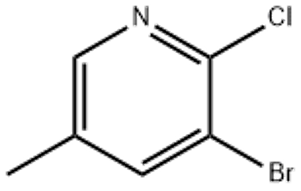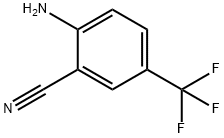2-Chloro-3-bromo-5-methylpyridine(CAS# 17282-03-0)
Risk and Safety
| Risk Codes | R20/21/22 – Harmful by inhalation, in contact with skin and if swallowed. R36/37/38 – Irritating to eyes, respiratory system and skin. R41 – Risk of serious damage to eyes R37/38 – Irritating to respiratory system and skin. R22 – Harmful if swallowed |
| Safety Description | S22 – Do not breathe dust. S26 – In case of contact with eyes, rinse immediately with plenty of water and seek medical advice. S36/37/39 – Wear suitable protective clothing, gloves and eye/face protection. S39 – Wear eye / face protection. |
| UN IDs | 2811 |
| Hazard Note | Harmful |
| Hazard Class | IRRITANT |
| Packing Group | Ⅲ |
2-Chloro-3-bromo-5-methylpyridine(CAS# 17282-03-0) Introduction
-Appearance: Generally yellow to orange-yellow solid.
-Solubility: Soluble in organic solvents such as ethanol and dimethyl sulfoxide, insoluble in water.
-Melting point: About 70-72 degrees Celsius.
-Density: about 1.63 g/mL.
-Molecular weight: about 231.51g/mol.
Use:
-It is often used as an intermediate in organic synthesis and is widely used in the fields of pharmaceuticals, pesticides and dyes.
-It can be used as a catalyst, reducing agent or reducing agent, etc., involved in a variety of organic reactions.
Method: The preparation of
-a generally involves the reaction of 3-bromo-2-chloropyridine with methyl bromide.
-The specific preparation method can be adjusted according to specific experimental conditions and requirements.
Safety Information:
-It is more stable under general operating conditions, but it still needs to be used with caution.
-in the operation should be careful to avoid skin contact and inhalation, should wear appropriate protective gloves, glasses and masks.
-In case of contact with skin or eyes, rinse immediately with plenty of water and seek medical help.
-Keep away from fire and heat sources during storage, and ensure that the container is sealed to prevent volatilization or leakage.








